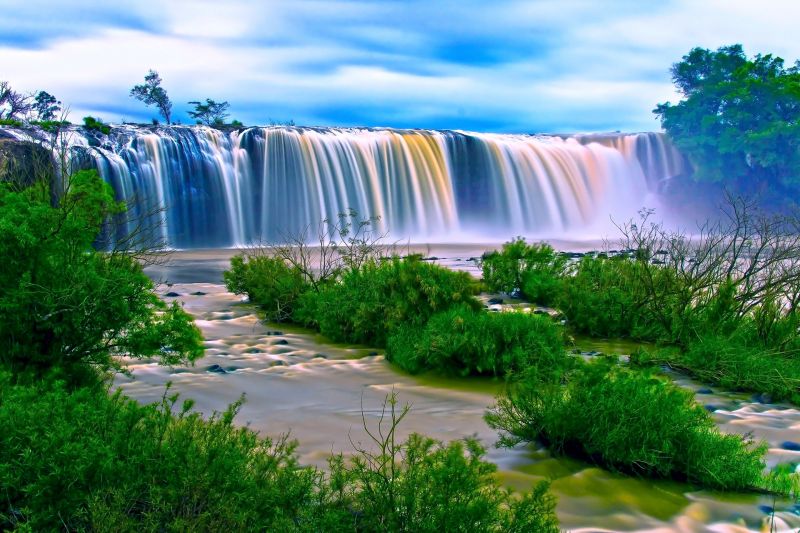Waterfalls Offer Insights into How Rivers Shape Their Surrounds
Published on by Water Network Research, Official research team of The Water Network in Academic
A study by a researcher at the School of GeoSciences suggests that how much water flows through a river has little influence over long-term changes to its course and the surrounding landscape waterfalls
Instead, the type of rock on a river bed has a greater impact on how rivers change over time, researchers found. The key insight will help scientists understand how rivers evolve and influence their surrounds, when for instance sea level changes or tectonic plates move.

Representative image, source: Public Domain Pictures
Lab tests were conducted on a scale model of a river. This included a waterfall feature, to examine how real-life waterfalls – which tend to migrate upstream over time, disrupting the landscape – are influenced by water flow and material forming the river bed. Upstream movement of the waterfall was influenced mostly by the composition of the river bed, rather than by the water flow, the study revealed.
When the water flow changed, the resulting channel adjusted its shape to accommodate this, having little impact on the position of the waterfall. By contrast, varying the river bed material did significantly affect how quickly the waterfall moved upstream.
The findings help explain the outcome of previous studies from rivers around the world, which showed that changes to the landscape are not always directly linked to how large a river is. For example, small waterfalls in Scotland may migrate faster than the Niagara falls in North America. When waterfalls migrate upstream, they are typically bounded by gentler landscapes than those downstream, which tend to have steeper slopes that are vulnerable to landslips.
Dr Mikaël Attal, of the University of Edinburgh’s School of GeoSciences, who took part in the study, said:
“Accurately modelling how rivers change is important for understanding landscape evolution in the past, present and future. The nature of the rock on the river bed plays a more important role than the size of flow in influencing how rivers evolve, and ongoing studies should take this into account.”
Source: The University of Edinburgh
---
'River self-organisation inhibits discharge control on waterfall migration' paper
Abstract
The action of rivers within valleys is fundamentally important in controlling landscape morphology, and how it responds to tectonic or climate change. The response of landscapes to external forcing usually results in sequential changes to river long profiles and the upstream migration of waterfalls.
Currently, models of this response assume a relationship between waterfall retreat rate and drainage area at the location of the waterfall. Using an experimental study, we show that this assumption has limited application. Due to a self-regulatory response of channel geometry to higher discharge through increasing channel width, the bed shear stress at the lip of the experimental waterfall remains almost constant, so there was no observed change in the upstream retreat rate despite an order of magnitude increase in discharge.
Crucially, however, the strength of the bedrock material exhibits a clear control on the magnitude of the mean retreat rate, highlighting the importance of lithology in setting the rate at which landscapes respond to external forcing. As aresult existing numerical models of landscape evolution that simulate the retreat of waterfalls as a function of drainage area with a fixed erodibility constant should be re-evaluated to consider spatial heterogeneity in erodibility and channel self-organisation.
Read and download full paper: NATURE
Media
Taxonomy
- Geology
- Hydrology
- River Studies
- Ecosystem Management
- River Engineering
- Hydrology
- River Engineering